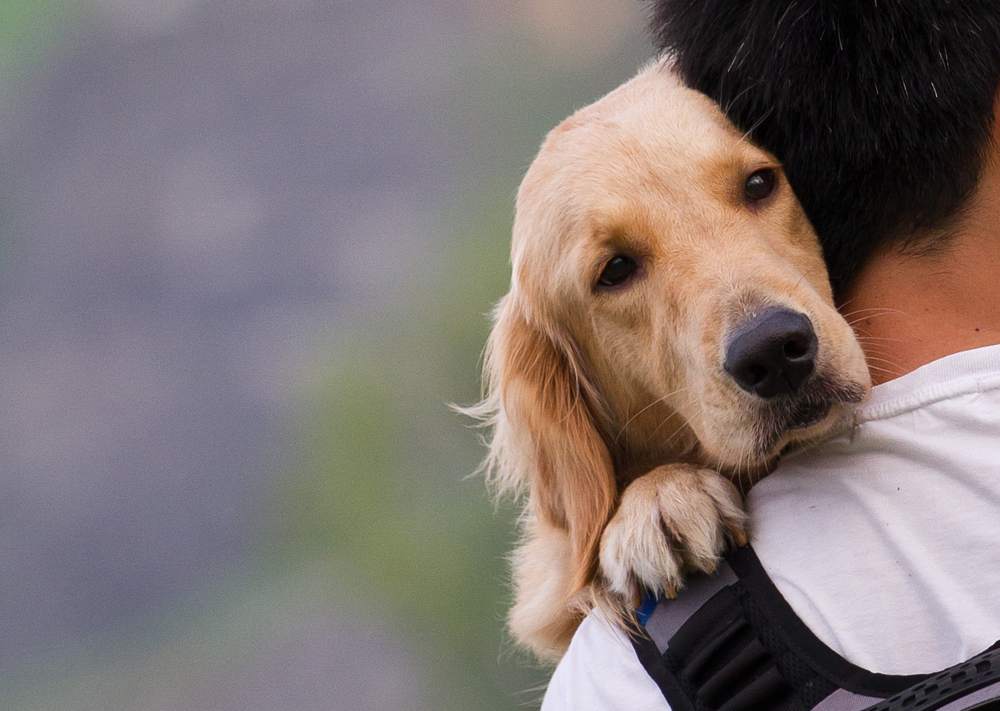Symptoms of Anxiety in Dogs
There are many types of anxiety disorders that can affect dogs and they manifest themselves differently. For example, there is noise anxiety, separation anxiety, travel anxiety, and so on. Some anxious behaviors include:
Excessive whining or barking.
The dog might be restless and exhibits frantic behavior such as panting, pacing, and trembling.
Refusal to eat or drink anything, even in the presence of food and water.
Pets may show this for several reasons such as feeling unwell, not hungry, or simply refusing to eat if they are anxious.
Excessive drooling and stomach upset.
Watch your dog at meal times – do they eat their breakfast in 5 minutes or less? If they don’t, it could be that they are anxious about something and will therefore not feel hungry.
Treatment of Anxiety in Dogs
There are several ways to treat anxiety in dogs which can include:
Dog anxiety medication.
This can be either in the form of over-the-counter sedatives or prescription medications that are specifically designed for anxiety. If you are giving your dog medication, always follow the advice of a veterinarian or other health care professional which will include checking with them before giving your dog any kind of medicine.
Spending time with your dog.
Taking the time to play or walk with your dog can help them release some of their pent-up anxiety and help ease them back into a more relaxed state of mind. Besides, you will also benefit from spending some quality time with your pet which is always a good thing for both of you.
Behavior training.
Dog behavior training can be very useful in helping your dog to learn new behaviors that will help them manage their anxiety levels. If they are anxious, the first step the trainer will take is to be able to identify what is causing the anxiety in your dog. From there, a training program will be put together that will help your dog learn new coping skills for their anxiety. Some anxiety in dogs may be due to past experiences which can be successfully managed with behavioral training, such as counter-conditioning and desensitization.
Environmental enrichment.
This is about giving your dog physical and mental stimulation to make sure they are happy in their surroundings and feel relaxed. This may involve having a designated place in the home where they can go when they feel anxious and a trigger for this might be a crate. It’s just a case of looking for the right environment that will give your dog what they need when feeling anxious.
Anxiety in dogs is not something to be ignored just because it isn’t life-threatening. If you have a pet that shows any of the symptoms outlined above or are worried about their welfare, then speak with your veterinarian who can advise you about treatment options. You may also want to consider seeking advice from a professional pet trainer if it feels that your dog needs more help than you can give them.
Treat them with CBD oil
Finding out that your dog is being affected by anxiety can be quite scary and worrying, especially if the symptoms seem to be getting worse. Fortunately, there are several things you can do to help ease this and one of them is by using CBD oil which has been shown to have a calming effect on pets.
CBD oil doesn’t contain psychoactive properties and is therefore safe to use with practically no side effects. It’s also very effective and can give your pet instant relief from anxiety symptoms. So if you are thinking of CBD oil for dogs, finding the correct CBD oil could be the solution you have been looking for.
Conclusion
Anxiety in dogs is not something to be ignored just because it isn’t life-threatening. If you have a pet that shows any of the symptoms outlined above or are worried about their welfare, then speak with your veterinarian who can advise you about treatment options. You may also want to consider seeking advice from a professional pet trainer if it feels that your dog needs more help than you can give them.
